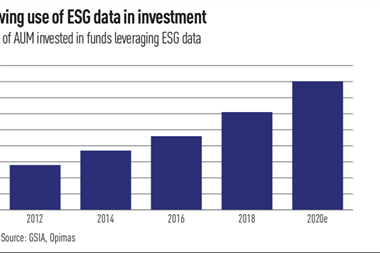Aba, Germany’s occupational pensions association, has confronted regulatory authority Bafin for its interpretation of minimum regulatory risk assessment requirements and business organization of occupational pension schemes.
BaFin sent two letters for consultation to Pensionskassen, Pensionsfonds and accounting associations, including a detailed explanation of the rules in August.
For the interpretation of the risk assessment rules, Bafin referred to the section 234d of the insurance supervision law (VAG) that translated into national law article 28 of the IORP II Directive.
In a reply to BaFin, Aba said the requirement for the documentation of risk assessments is “a challenge” for occupational schemes and do not meet the criteria of proportionality.
BaFin should clearly emphasize the proportionality of regulatory requirements in the letter sent for consultation, Aba added.
The association considered the reference to EIOPA’s statement and report “common framework for risk assessment and transparency of IORPs” in the written communication sent by BaFin for consultation to be “technically incorrect”.
The methodology used in the Common Framework is inappropriate for IORPs and would be “more conservative” than Solvency II, it said.
Even if BaFin had mentioned the Common Framework approach only as an example, Aba has continued to spot a contradiction with the IORP II Directive.
BaFin referred to EIOPA’s common framework in its letter for assessment methods, stating that EIOPA’s methods can be used at pension schemes’ discretion.
BaFin also said that methods appropriate to the risk profile of IORPs can be used to assess their financial situation.
IORPs can also use other methods to assess their financial situation at their own discretion including, for example, the “common framework for risk assessment and transparency of IORPs”, published by EIOPA or methods for asset-liability management (ALM).

BaFin stressed that there must be an assessment on whether existing regulatory requirements for the coverage of insurers or Pensionsfonds’ liabilities, financial resources and risk-bearing capacity will also be met in the future, and also by taking risks into account.
The liquidity of IORPs has to rely on quantitative information, it said.
It added that the application of the principle of proportionality does not mean simplifying assessments on the financial situation or the scope of quantification of the overall financing requirements.
According to Aba, BaFin has used the Solvency II regulation to design the requirements also for the business organization of occupational pension schemes.
The rules to calculate technical reserves, it added, are inspired by Solvency II and are not in line with the IORP II directive.
For sponsoring companies, Aba considered service level agreements and a less detailed review “absolutely sufficient” and necessary for outsourcing practice.
In the second written communication sent for consultation, BaFin clarified that the management of an occupational pension scheme is responsible for business organization.
The management team is also responsible to put in place an effective risk management and internal control system.
IORPs should set material limits at the level of actuarial, market, credit risk, liquidity and operational risks.
If necessary, further separate material limits can be determined, including political, strategic or reputational risks. Sustainability risks require a separate set of material limits.











No comments yet